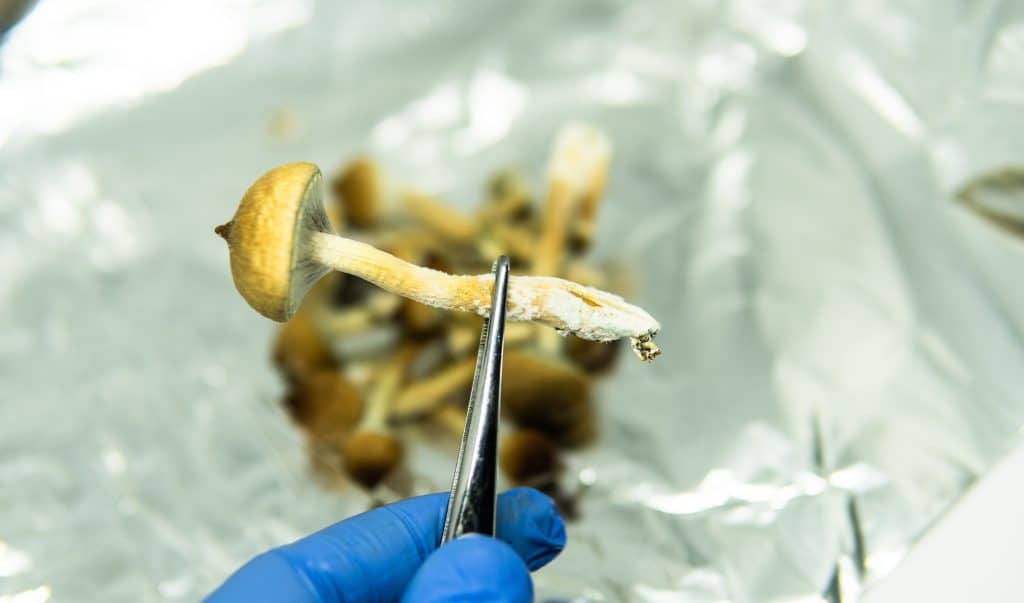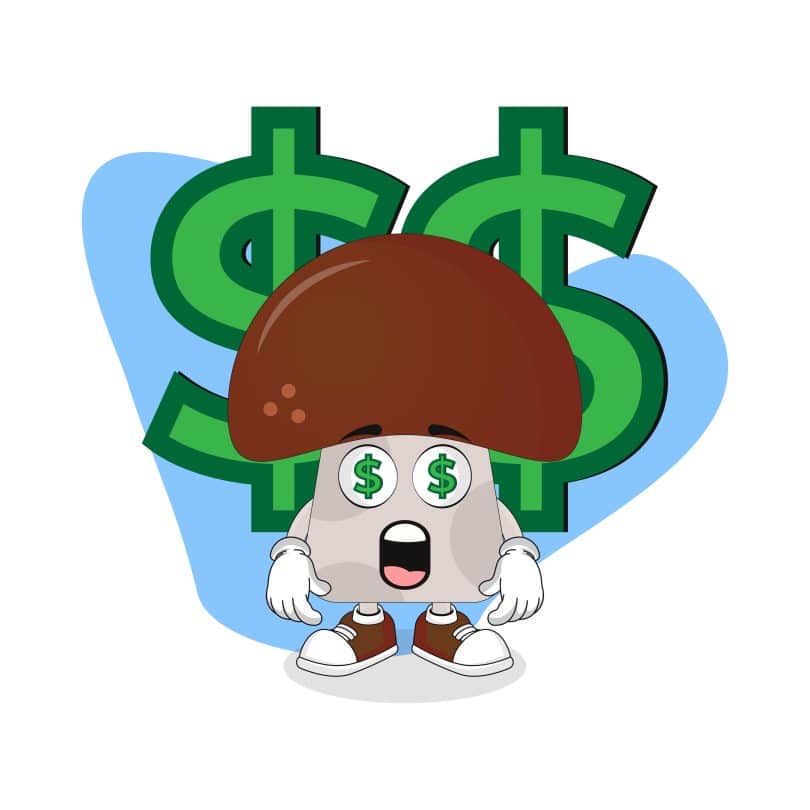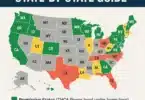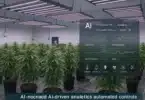Oregon started a new trend by passing legislation to open an adult-use magic mushrooms market in the form of legal administration centers. Sounds pretty awesome, right? But how much will a session set a person back? It’s great to have this service, but can the average person afford it? Here’s a little on the new price of shrooms, and what you can expect in the future.
The industry is about to begin, and the price of shrooms is looking pretty high. Will this change? Welcome to an independent news publication focused on stories in the cannabis and psychedelics spaces. Sign up for the Cannadelics Weekly Newsletter for weekly updates, and to get prime access to offers on a range of stuff like vapes, smoking devices, edibles, other cannabis paraphernalia, and the growing-in-demand cannabinoid compounds Delta 8 & HHC. All the info is in our ‘best of’ lists, so head on over to find deals, and please enjoy responsibly.
Let’s trip out, Oregon!
Though the news isn’t new anymore, the concept still is, and many are probably unaware of what happened, or what it actually means. So, here’s a little recap. In November 2020, Oregon did the unthinkable, and put it to voters to decide if they wanted to legalize magic mushrooms for an adult-use market. What did the population of Oregon say? A resounding ‘Yes!’ To be fair, it wasn’t a sweeping majority, but 55.75% wanted it, opposed to 44.25% who did not.
At the time of the vote, there was nothing specifically written about how it would work. Voters literally voted to open an industry, while having no idea about the details therein. The measure, officially called the Psilocybin Mushroom Services Program Initiative, came with this description: “Clients would be allowed to purchase, possess, and consume psilocybin at a psilocybin service center and under the supervision of a psilocybin service facilitator after undergoing a preparation session.” And that’s about it.
The specifics were so unclear, with so many rumors flying around, that many thought it was a medical legalization. At the end of May, Oregon began releasing its rules for this new industry, elucidating the situation. The Oregon Psilocybin Services, a part of the Oregon Health Authority, put out its first round of rules, though they don’t cover everything. It’s hoped that the remainder of the regulations will be instituted by year’s end, for a market opening in late January, 2023.

Among the guidelines, Oregon made clear it only wants one type of mushroom right now, Psilocybe cubensis, a much-contested point. It also doesn’t want synthetic products, or derivatives used; it requires psilocybin and psilocin content be within 20% for all mushrooms; it only approved the eating of mushrooms for drug delivery; and stipulated that the mushrooms are only legal when consumed in a specific center, under the guidance of a non-medical tripsitter. These tripsitters can’t offer any form of treatment, but are required to undergo a certain amount of training.
Basically, Oregon set up something in between a medical legalization and a recreational legalization. There’s no medical application, but it comes with the requirement of being in a specific facility, and under the guidance of a tripsitter. Plus, no possession laws were made, meaning the mushrooms are merely decriminalized outside of these settings, but not actually legal for use. Their decriminalization came during the same election, when a separate ballot, Measure 110, decriminalized the personal possession and use of all drugs in the state.
The price of shrooms
It’s not ideal. When we hear the word ‘legalization’, we expect it to mean something is actually legal, right? Well, in the case of Oregon and magic mushrooms, its more like ‘legal with some major caveats’, even more so than the weed industry. After all, not one legal weed state requires the use of designated sites to get high. Not even for medical use. So this ‘legalization’ immediately comes with some detractions. But it’s the first of the industry, so at the same time, the progress is commendable, and we can hope some of these kinks get worked out in the future.
One of the biggest issues presenting itself now, is that it’s not exactly cheap. And by that I mean, it’s really expensive. Anyone who shops in a cannabis dispensary is aware that the prices are generally higher than black market prices. And though sometimes much higher, they’re still within reason compared to the daunting price of shrooms in Oregon’s upcoming industry. As the industry isn’t open yet, nothing is for sure, but recent statements imply a very high-priced industry. The current expectation of prices, just like with weed, is not based on government regulation, but set by private industry.
Field Trip Health & Wellness CEO Ronan Levy put it this way, in terms of pricing “An easy analogy is gyms where there’s a lot of mom and pop gyms that are open, but there’s Equinox locations across the world and both compete in their own respective spaces.” His implication is that treatment can be more or less expensive depending on the specific program.
As it happens, Field Trip already has established magic mushrooms centers in the Netherlands, where $4,160-7,750 will exit your bank account, depending on the number of sessions. Another company in the Netherlands, called Synthesis, is looking to open a center for immersive retreats on a large estate, which could put consumers back $6,497 for a five-day experience. These, of course, are in Europe, but they show what this industry will likely cost in the US as well.

Some local operators are looking to make a more cost-effective experience. The Alma Institute, a not-for-profit organization helmed by Rebecca Martinez, is hoping to offer a single session (complete with prep session and after care) for about $1,500. Martinez explains, “We need to ensure facilitators have a sustainable living and prevent burnout. Fair wages are a big part of this.”
She makes a good point. Just like the cannabis industry, the mushroom industry involves all the costs of cultivation and production. Unlike the cannabis industry, this one requires actual people to be in attendance. A whole other person must be there, who’s earning a salary to do it; making the cost of these trips, inclusive of the cost of this staff member. This is yet another downside to the general setup, as it creates an overhead cost which doesn’t exist for weed.
The unfortunate reality is that most people can’t pay such exorbitant prices. And as this isn’t a medical industry, no coverage is expected. Those who want to partake, must reach deep into their pockets to provide the full amount. For as cool as it is that Oregon is setting up this service, the sheer price of using the shrooms is a major inhibitor to the new industry. In the end, these prices might serve the same purpose as raised prices in the cannabis industry, and further bolster the black market.
The cost of ketamine ain’t any better
The magic mushroom industry is looking to take after the high-priced ketamine industry. Ketamine might be the new rising star of both psychological and pain treatments, but its cost is as bad as the English in my sub-heading. With standard treatment sessions running from about $400-800 (or as much as several thousand) for one session, this isn’t a treatment that just anyone can afford. Different companies offer different deals – much like Levy described with his gym analogy and mushrooms, but the price range stays generally high for standard sessions. Some companies are incorporating things like group sessions to bring down cost, which can reduce it by as much as about half.
As a way to bring down costs further, some ketamine clinics offer at-home treatment. As there are still no reports of real issues with ketamine, and since the ketamine for these treatments still comes from a pharmacy, it’s not the worst option, but it does come with a few detractions that consumers should consider. For one thing, ketamine is far less bioavailable when taken orally, and therefore harder to dose since there’s more individual variation. In a medical setting, ketamine is administered via IV, making for more uniform bioavailability, and greater ability for precise dosing. It’s way easier to take too much or too little, when taking it orally.
Plus, there’s no one there to help. Ketamine is still a drug that can send someone into an anesthetized state, aka, a k-hole. It can still have strange or unexpected effects, especially for unfamiliar users, and it can put someone into a precarious situation if they’re not in a safe place when using the drug. Paying out for the medical setting, means paying out for the medical help, and the safety it offers, as well. On top of these factors, for those using it for psychological purposes, at-home treatment might provide less of the therapy aspect, which is a big part of the whole thing.

There is one place where ketamine treatment allows for lower pricing, but it has some steep requirements. Ketamine itself isn’t legal for psychological treatments or pain treatments, but it is legal as an anesthetic, meaning we’re not talking about a Schedule I drug. As such, doctors can prescribe it as they see fit, which has led to a large gray market ketamine industry that depends on off-label prescribing.
However, the government did officially approve a version of it called esketamine, but only for treatment-resistant depression. As this is an approved medical treatment, patients can have it covered by health insurance, making for lower costs. On the downside, because its officially approved, it comes with government regulations attached, like needing to have already tried, or be on, a standard pharma antidepressant. Many people are heading towards ketamine, specifically to avoid this. It also isn’t approved for pain, so anyone looking for ketamine pain treatments, must go to the gray market clinics automatically.
In either case, when dealing with the price of shrooms or ketamine, actual street prices are so far below, it’s a little silly. A syringe of mushroom spores can go for about $10-15, with an ounce costing somewhere around $200. Or, of course, a total of $0 if picked from nature. Ketamine, for its part, can go for about $20-25 on the black market for a single dose, a far cry from the hundreds paid out per dose in a clinic.
Conclusion
If all this makes it sound like alternative treatments are cool, but not accessible, there is hope for the future. The price of shrooms might start out high, but if the field suffers any of the overproduction issues of the weed industry, these prices could be driven down. Plus, magic mushrooms are gaining popularity worldwide, as evidenced by Thailand, which is also looking to get into magic mushroom treatments, and which is already dedicated to doing so at a cheaper price point. This could influence overall markets, by creating competition, and bolstering medical magic mushroom tourism.
Hello and welcome everyone! Thanks for hanging out with us at Cannadelics.com, your go-to internet news provider for independent coverage of both the cannabis and psychedelics fields of today. Check in with us regularly to keep updated on important events, and subscribe to the Cannadelics Weekly Newsletter, to ensure you’re always aware of what’s going on.







